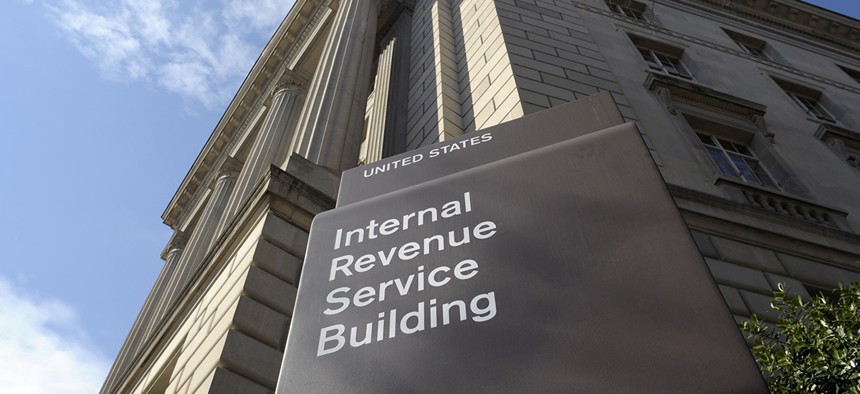IRS Spent Millions to Set Up Virtual Assistance Centers That No One Is Using

Susan Walsh/AP File Photo
Of the millions of taxpayers looking for help last year, only 2,700 used the Virtual Service Delivery stations.
The IRS created a state-of-the-art virtual service set up to interact with taxpayers that aims to modernize the experience and help the agency keep costs down—but taxpayers aren’t using it.
Delivering quality customer service to taxpayers comes at no small expense. The IRS fields about 116 million calls through its customer contact centers each year at a cost of about $41 per call, Michael Lin, the agency’s chief of user experience and design, told Nextgov earlier this year. Taxpayers who want to meet in person cost the agency some $67 a visit, he added.
The agency has been working on solutions to provide better customer service at lower cost, including the Virtual Service Delivery system. The system is not ubiquitous—taxpayers have to go to one of 47 specific locations to access the service, such as an IRS field office or library—though the agency is working to expand the service to be accessible from any computer or personal device. While those pilots are underway, taxpayers currently must call one of the designated locations to make an appointment before arriving in person.
The service also suffers from low utility, according to a report from the Treasury Inspector General for Tax Administration. “For example,” inspectors wrote, “taxpayers cannot use VSD to apply for an Individual Taxpayer Identification Number or resolve potential identity theft issues because the IRS does not allow the virtual authentication of identification documents—although federal guidelines permit virtual authentication.”
The IRS has spent $5.3 million since 2011 building out the system. That total will rise to $7 million before the end of fiscal 2020.
The service itself appears to work well, according to auditors, who tried it out in person at nine sites. From the report:
During our simulations, the high-definition computer monitor enabled us to recognize facial expressions and body language, which are important benefits of the VSD program according to the IRS. The phone system enabled us to hear each other without delays or echoing. Most of the virtual workstations were located in a private room at the partner sites, which limited background noise during our interactions. The document reader allowed us to see holograms and other markings on personal identification documents, such as a driver’s license.
Despite this, only 2,700 taxpayers used the system in 2017.
In their assessment, TIGTA auditors said the number of services offered, problematic locations—namely those in close proximity to other tax assistance services—and a lack of coordinated publicity have led taxpayers to seek assistance through other channels.
While IRS officials at the Field Assistance and Office of Appeals bureaus are working to expand the service to be more widely accessible, “neither business unit has developed criteria to determine whether the pilots have been successful,” auditors note, adding that “participation in the pilots has been limited.”
Auditors also said the program suffers from a lack of defined goals and performance metrics.
“Exploring alternative service delivery arrangements, such as VSD, aligns with the IRS’s goal to expand the ways in which taxpayers can interact with the IRS,” the report states. “However, pursuing alternative service delivery arrangements for the sake of pursuing them is not alone enough to justify a program’s existence. Without a clear vision and related goals for the VSD program, it is not possible to objectively measure whether the program is operating effectively or efficiently.”
Overall, the report makes five recommendations. IRS officials agreed fully with four. Officials “generally agreed” with auditors’ recommendation to offer more services through the program, though said the agency cannot issue individual ID numbers through a virtual environment.






